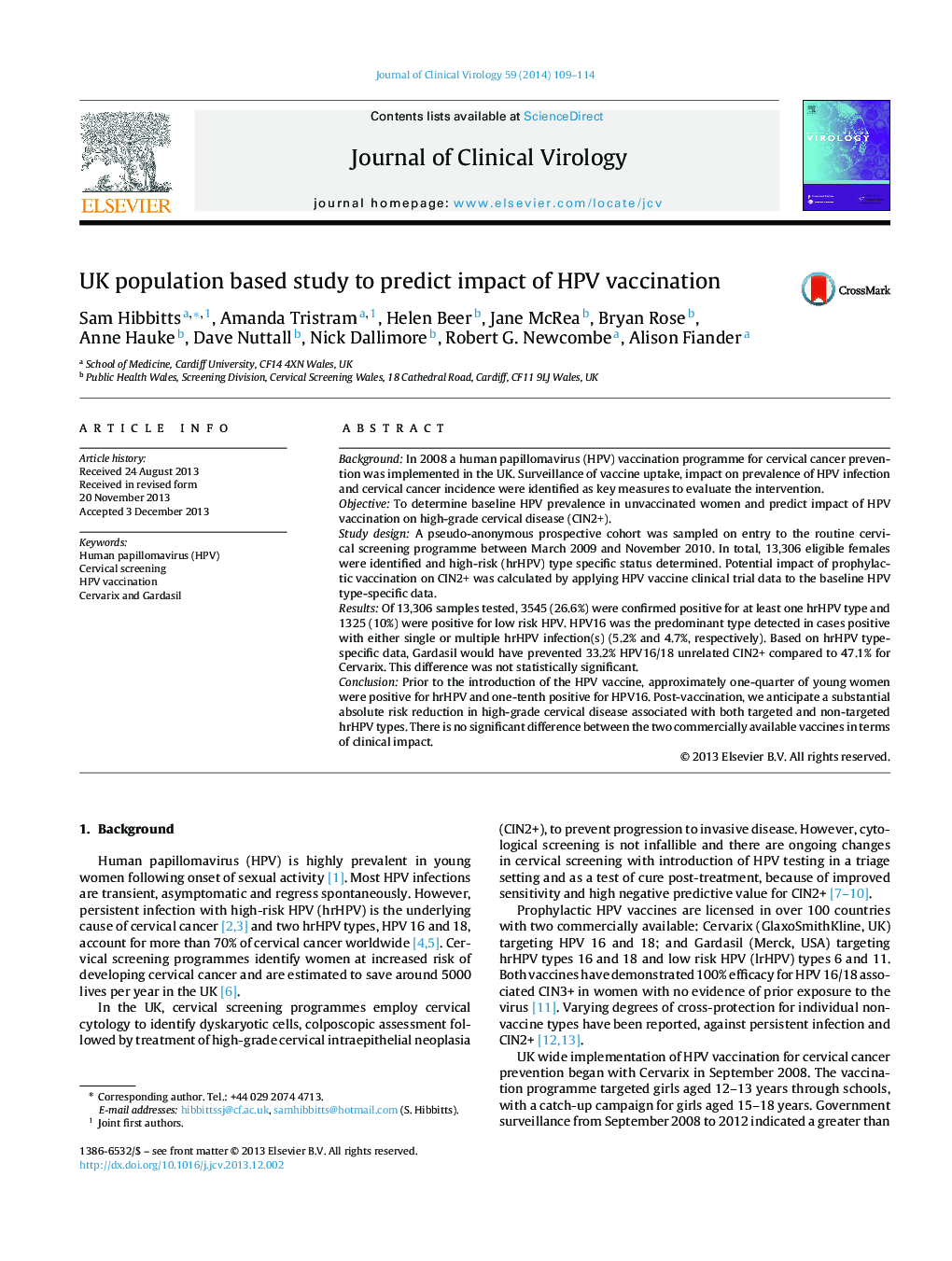| Article ID | Journal | Published Year | Pages | File Type |
|---|---|---|---|---|
| 3368964 | Journal of Clinical Virology | 2014 | 6 Pages |
BackgroundIn 2008 a human papillomavirus (HPV) vaccination programme for cervical cancer prevention was implemented in the UK. Surveillance of vaccine uptake, impact on prevalence of HPV infection and cervical cancer incidence were identified as key measures to evaluate the intervention.ObjectiveTo determine baseline HPV prevalence in unvaccinated women and predict impact of HPV vaccination on high-grade cervical disease (CIN2+).Study designA pseudo-anonymous prospective cohort was sampled on entry to the routine cervical screening programme between March 2009 and November 2010. In total, 13,306 eligible females were identified and high-risk (hrHPV) type specific status determined. Potential impact of prophylactic vaccination on CIN2+ was calculated by applying HPV vaccine clinical trial data to the baseline HPV type-specific data.ResultsOf 13,306 samples tested, 3545 (26.6%) were confirmed positive for at least one hrHPV type and 1325 (10%) were positive for low risk HPV. HPV16 was the predominant type detected in cases positive with either single or multiple hrHPV infection(s) (5.2% and 4.7%, respectively). Based on hrHPV type-specific data, Gardasil would have prevented 33.2% HPV16/18 unrelated CIN2+ compared to 47.1% for Cervarix. This difference was not statistically significant.ConclusionPrior to the introduction of the HPV vaccine, approximately one-quarter of young women were positive for hrHPV and one-tenth positive for HPV16. Post-vaccination, we anticipate a substantial absolute risk reduction in high-grade cervical disease associated with both targeted and non-targeted hrHPV types. There is no significant difference between the two commercially available vaccines in terms of clinical impact.
